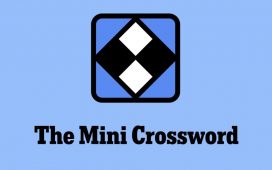
Card battle games are a cornerstone of analog gaming. From the venerable Magic: The Gathering to the recently departed Android: Netrunner, their addictive blend of brainy strategy and beautiful artwork have brought millions of players to the table. Their other big draw? The potential for personalization—players can spend hours honing and perfecting their decks, tweaking tactics and hunting for powerful card combinations.
It’s a rich, engrossing process, but it’s not for everyone. If recent releases are anything to go by, a substantial audience of gamers would rather just skip it. Keyforge, the recent game from Magic creator Richard Garfield, removed custom decks from the equation, instead handing players pre-assembled, algorithmically generated collections of cards. And now there’s Sorcerer, the latest release from Star Realms studio White Wizard Games. The game takes a more low-tech approach to bypassing deck construction, throwing players straight into a battle of cunning, cleverness, and giant spiky demons.
Many games revolve around clashes between good and evil, but in Sorcerer, everyone’s a bad guy. Set in a twisted version of Victorian London, the game casts players as occultists, mystics, and necromancers, all vying to become the city’s preeminent practitioner of the dark arts. Players do this by summoning horrific creatures and then fighting to claim regions of the city. While much of that will sound familiar to anyone who’s played similar games, a handful of elements here help Sorcerer stand out.
The biggest different is Sorcerer‘s system for deck construction. Rather than having players build their decks before playing, Sorcerer makes the process an integral part of the game. Before the first round, you and your opponents each draft three small stacks of cards. The first represents your in-game persona: a wizened warlock, blue-haired witch, a demon warlord, or an ethereal creature with far too many arms. From there, you’ll select a school of magic: necromancy, demonology, blood rites, or animism (which involves summoning disturbing quantities of big, hairy spiders). Finally, you choose a set of cards representing your home location—anywhere from a haunted forest to the “Screaming Coast,” which presumably doesn’t do a roaring tourist trade.
Each set of cards comes with different spells, creatures, and tactical advantages. Once you’ve grabbed three sets, you’ll shuffle them together to create your deck. Thus, each playthrough has the potential for new card combinations, and while it only captures a little of the customization available in full-blown collectible card games, it does so in a fraction of the time. You can be set up and ready to play Sorcerer in about two minutes.
Once you’ve assembled your deck, you’re pitched into a turf war on the shadowy streets of London, commanding a menagerie of hideous monsters in an effort to stake your claim on three different city districts. The first player to control two districts wins the game.
Pulling this off means adapting to the specific strengths of your deck. You might find yourself in control of powerful minions which dish out devastating damage in combat. Or you could end up working with weaker units that steadily accrue power over time. Some cards let you power-up your creatures, increasing their effectiveness in combat and providing them with useful new abilities. Others damage, weaken, or exhaust your opponents’ troops, giving you valuable edges in the fights unfolding across the table.
These approaches will be familiar to veterans of just about any other card battle game. But there’s another important element to your strategy here. In Sorcerer, you also control an in-game avatar with a combination of special powers based on the elements chosen for your deck. Some grant strength bonuses to attacking troops, while others let you summon creatures at a reduced cost or let you deliberately damage your own units in exchange for useful one-off bonuses. You need to choose just one of the game’s three battlefields to deploy your character to on each round, though, and working out where they can most effectively help your cause takes careful consideration.
It all adds up to a thoughtful system for card-based combat, with plenty of tough decisions to chew over. However, some aspects won’t please everyone.
For one thing, while Sorcerer’s multiple battlefields make for interesting tactical choices, they also mean that games have a tendency to run long. If you’re a Magic player who favors hyper-aggressive decks that aim to win in the first few turns, there’s no real equivalent here.
-
-
Skulls and stars!
-
The game’s four avatars.
What’s likely to be more off-putting to strategy card game purists is Sorcerer’s dice-based combat system. Attacking in battle involves rolling a handful of dice, followed by a back-and-forth process of spending tokens to re-roll misses or forcing opponents to re-roll hits. While there are ways to mitigate against bad luck, an otherwise perfect plan can still come unglued due to pure chance.
The fact that combat can take a minute or two to resolve also means that in games with three or more players, anyone who isn’t involved can find themselves watching from the sidelines, waiting for something to do. This gets steadily more grating with repetition—enough so that I’d only ever want to play against a single opponent.
There’s also the fact that, while the deck creation system mashes mechanical elements together in some interesting ways, most of the game’s strategies will be familiar to anyone who’s played Magic or any number of similar games. Hopefully the game’s forthcoming expansions will see more mechanisms playing with the things that lend Sorcerer its unique character: multiple battlefields and the player’s roving avatars.
As it stands, though, Sorcerer’s base set does an impressive job of condensing a collectible card game experience into a single box. And its horror artwork comes with an array of suitably nasty beasties, plus more pentagrams than a Slayer concert. It’s a promising start.






